Quad Muscles
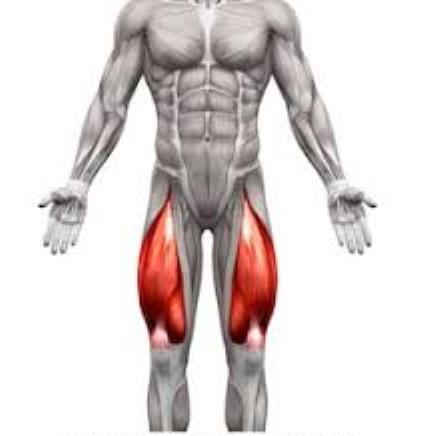
ANATOMY & INJURIES
The quads are a group of 4 muscles along the front of the thigh which are used in hip flexion & knee extension, ie. running, jumping, kicking & stepping, and strains to these muscles are a common sports injury.
1)Rectus Femoris (RF) most superficial quad muscle, in the middle of the thigh, & is the only muscle that crosses the hip & therefore flexes the hip as well as extending the knee. This makes it more prone to stretch-induced strain injuries, usually at the muscle tendon junction just above the knee or in the muscle itself.
2)Vastus Lateralis (VL) runs towards the outside of your thigh & is involved in knee extension only
3) Vastus Medialis (VM) runs more towards the inside of your thigh, knee extension only
4)Vastus Intermedius (VI) runs between the VL & VM but deep to the RF,knee extension only,
These four muscles unite to form the patellar tendon at the knee, stabilising the knee when climbing or lowering the body.
INJURIES
Having weak quads will almost certainly cause knee pain, because they are designed to act as shock absorbers when you walk, so weakness increases the strain on your joints.
• WEAK VM is linked to patello-femoral pain & very tight VL
• TIGHT RF can affect the glutes, which in turn can cause further lower limb injuries
• TIGHT VL, being on the outer knee, will interfere with the knee alignment & cause friction
MUSCLE STRAINS:-
Grade 1 strains- minor tears.
Grade 2 strains- partial tears with significant pain & loss of strength.
Grade 3 strains –completely torn muscle with severe pain & loss of strength.
KNEE POSITIONING AT TIME OF QUAD INJURY :-
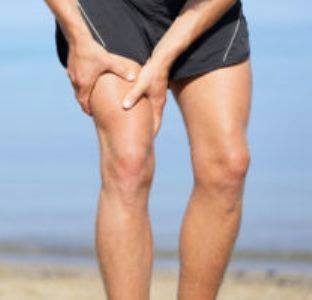
Immediate action is required when a quad strain occurs in order to avoid muscle spasms & reduce bleeding. The knee should be flexed to 120° within 10 mins following injury. This will encourage less painful healing because the quad will start to heal in a shortened position. The RF crosses two joints & has a high percentage of Type II fibres, used for power movements, both of which make it more prone to injury.
CAUSES
• Acute injuries are usually due to trauma, usually a collision in contact sports eg.rugby, football & basketball
• Overuse & repetitive movements during exercise
• Strength imbalance between the quads & the hamstrings, hamstrings being stronger, which is common in runners
• awkward landing from a jump or a fall causing a forceful contraction
• sudden deceleration of the leg e.g. kicking
• violent contraction of the quads eg.sprinting
• rapid deceleration of an overstretched muscle eg. quickly changing direction
• excessive passive stretching
• muscle fatigue
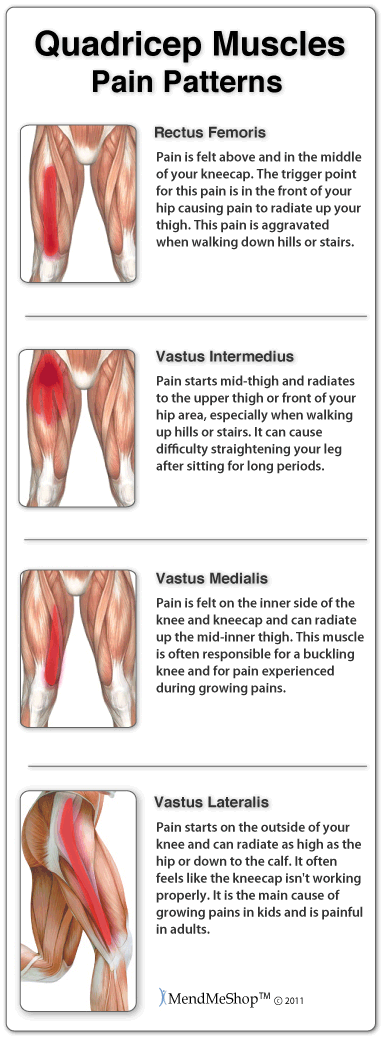
GRADE 1
• may feel some discomfort/tightness in the thigh
• may be able to continue training at the time of injury
• running may be difficult
• may be a lump or spasm at the site of injury but no swelling
GRADE 2
• sudden sharp pain when running/ jumping/ kicking
• may be unable to continue with exercise
• Pain/swelling/mild bruising
• Walking will be difficult
• pain will be felt when pressure applied
• knee extension against resistance is likely to be painful
• inability to fully bend the knee
GRADE 3
• severe, sudden pain in the front of the thigh
• unable to walk without help
• immediate swelling
• significant bruising within 24 hours.
• static muscle contraction will be painful & show a bulge in the muscle
• out of action for 6 - 12 weeks
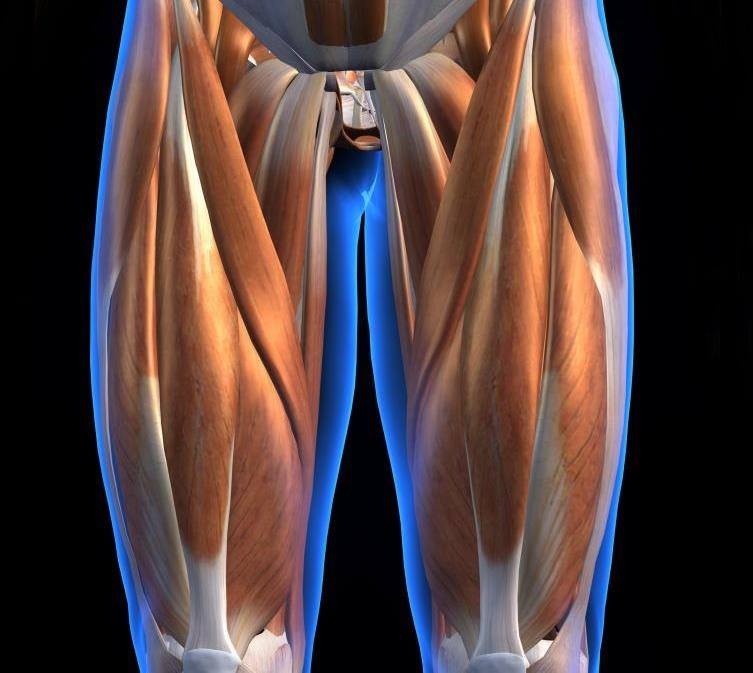
TREATMENT
Immediate treatment:-
R.I.C.E. treatment plan for the first 24 - 72 hours
• REST – for 3-7 days following injury to avoid further retraction of the ruptured muscle, & reduce the size of the haematoma &the connective tissue scar. The inactivity also promotes tissue granulation at the site of injury. Once strong enough to bear the force of muscle contraction, mobilization can be reintroduced gradually to restore muscle strength & prevent atrophy ,optimizing the healing process
• ICE – to reduce blood flow and inflammation to the area, and promote early regeneration.
• COMPRESSION & ELEVATION – to reduce pressure and therefore blood flow and interstitial fluid accumulation, which reduces swelling, haematoma formation and tissue necrosis.
• GRADE 2-3 strains may require the use of crutches for the first few days
• anti-inflammatories to reduce pain and inflammation
• After 3-5 days, depending on the severity of the strain, you may be able to gradually start stretching to improve range of motion
• when activity restarts, ice packs after exercise will be beneficial to reduce any swelling.
• Once able to use the leg without pain, slow jogging program can commence, after a warm up,being sure to avoid sudden accelerations and sprints.
• If movement results in pain or increased tenderness, reduce activity
• Surgery (GRADE 3 rupture), where there is a large intramuscular haematoma, where pain persists on extension past 4-6 months with restricted movement which may indicate adhesions from the scar tissue
PREVENTION
• strengthen the quads with regular stretches
• warm up before exercise
• runners can do quad extensions, squats, cycling, and step exercises to cross train
STRETCHES TO STRENGTHEN
Preventive exercises to strengthen the quads include:-
- Leg press
- Double leg squat
- Single leg sit-stand-sit
- Hip flexor and quad stretch
These exercises will also balance the quads with the hamstrings and glutes.
3–5 DAYS FOLLOWING INJURY:-
Stretching - should be done to the point of discomfort, but not pain. Ballistic stretching should be avoided due to the risk of re-tearing muscle fibres
• STATIC QUAD STRETCH
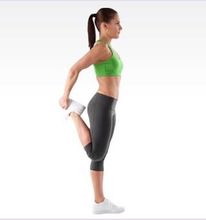
- This can be performed in either standing, or laying on your front. Pull the foot of the injured leg towards your buttock until you can feel a gentle stretch on the front of the thigh.
• HIP FLEXOR STRETCH
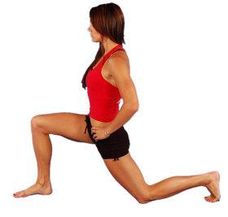
- Kneel with one knee on the floor and the other foot out in front with the knee bent. Push your hips forwards and keep the back upright. You should feel a stretch at the front of the hip and top of the thigh. Strengthening (low level from day 5 if pain free)- to gradually increase the load that is put through a muscle. Start with isometric or static exercises then progress to dynamic exercises with resistance band, building up to sports specific running exercises.
• STRAIGHT LEG RAISES:
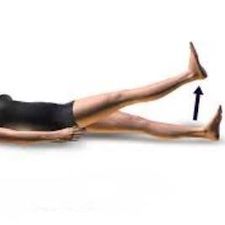
Sit flat on the floor with the legs straight out in front of you. Raise one leg off the floor keeping the knee straight. Hold for 3 to 5 seconds before lowering back to the ground.
• WALL SQUATS
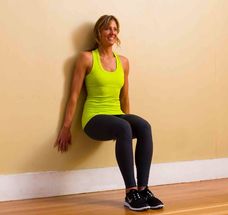
increase range of motion and aerobic fitness functional training
